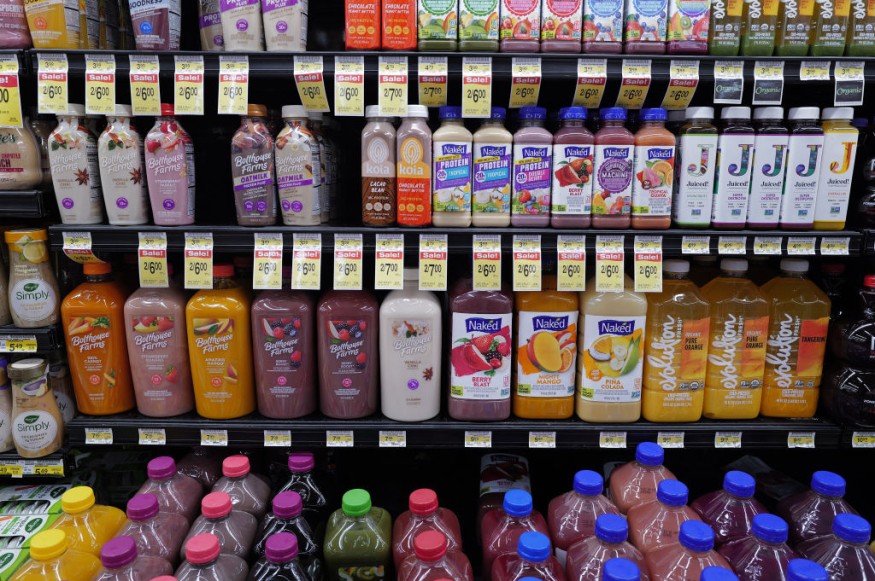Wholesale Inflation Accelerates, Raising Questions About Fed Rate Hike Timing
The latest indication that some inflationary forces in the economy are still present is the increase in wholesale prices in the United States in January.

According to a Labor Department data released on Friday, the producer price index, which measures inflation before it reaches consumers, increased by 0.3% between December and January following a decline of -0.1% between November and December. January saw a modest 0.9% increase in producer prices on an annual basis.
With volatile food and energy costs excluded, "core" wholesale prices increased by 0.5%, the most since July of last year. Core prices increased by 2% from 1.7% in the prior month when compared to the same period last year.
A major focus of the public's resentment toward inflation is President Joe Biden's campaign for reelection. Inflation metrics have fallen from record highs and are getting close to the Federal Reserve's target goal. However, a lot of Americans are still frustrated that average costs have risen by around 19% since Biden came to office.
Measurement anomalies contributed to part of the producer price increase in January. Among them is a 5.5% rise in the price of financial management services from December to January alone. Furthermore, a lot of businesses raise prices early in the year, which frequently raises January's total inflation measurements.
However, the prices of hospital stays, doctor visits, and hotel stays also increased last month, indicating that the travel, health care, and other service industries are also experiencing high levels of inflation.
The Fed will probably be cautious about when to start lowering its benchmark interest rate in light of the data released on Friday. It seems probable that the Federal Reserve will want to keep an eye on statistics from a few more months to make sure that the trend of declining inflation will continue.
The wholesale numbers come after this week's unexpectedly heated data that revealed consumer prices decreased less than anticipated in the previous month, indicating that the pandemic-fueled inflation spike is only sporadically and slowly beginning to stabilize.
Fed's Pricing Measure and Rate Projections
The Fed's preferred pricing measure is calculated using part of the data from Friday and will be released later this month. Indicator has been significantly underperforming the more well-known consumer price index. According to the Fed's preferred gauge, prices increased at a mere 2% annual pace in the second half of 2023, meeting its inflation objective.
However, following the wholesale pricing announcement on Friday, analysts predict that core prices in the Fed's preferred gauge will have increased by as much as 0.4% or 0.5% by the time the figures are released later this month, a rate that is far higher than what would be expected given the Fed's inflation objective.
Fed policymakers predicted in December that they would decrease their benchmark rate three times this year, expressing optimism that inflation is moving down. In an effort to continue its deliberate campaign against excessive inflation, the Fed raised interest rates last year to a 22-year high of around 5.4%. Its rate increases, which were meant to reduce borrowing and spending, have significantly increased the cost of using credit cards, getting a mortgage, and taking out business and vehicle loans.
If inflation were to reach the Federal Reserve's objective of 2%, high borrowing rates would probably no longer be considered essential. Rather, rates would be expected to be lowered by the Fed, lowering the cost of corporate and consumer borrowing.
Nonetheless, a few authorities are still wary. The Federal Reserve Bank of Atlanta's president, Raphael Bostic, stated late on Thursday that he was "not yet comfortable that inflation is inexorably declining to our 2% objective."
Nonetheless, despite the release of the highly anticipated consumer inflation report on Tuesday, other Fed members expressed their optimism. The Chicago Fed's president, Austan Goolsbee, stated on Wednesday that "it's totally clear that inflation is coming down" after looking at statistics over longer time periods than a single month.
A few analysts and traders on Wall Street had predicted that the Fed will drop interest rates for the first time as early as March. However, Powell stated two weeks ago that a rate drop that month was improbable and that the Fed would not begin lowering rates until it had "greater confidence" that inflation is stably returning to its 2% objective. The majority of experts now predict that rates will drop in May or, maybe more likely, June.
Fed policymakers predicted in December that they would decrease their benchmark rate three times this year, expressing optimism that inflation is moving down.
In an effort to continue its deliberate campaign against excessive inflation, the Fed raised interest rates last year to a 22-year high of around 5.4%. Its rate increases, which were meant to reduce borrowing and spending, have significantly increased the cost of using credit cards, getting a mortgage, and taking out business and vehicle loans.
Related Article : Record National Debt Raises Concerns, But Average Impact on Individuals May Be Nuance
© 2025 MoneyTimes.com All rights reserved. Do not reproduce without permission.











